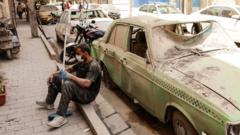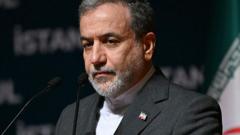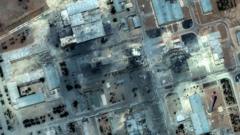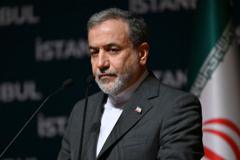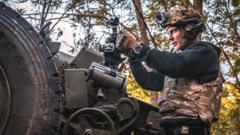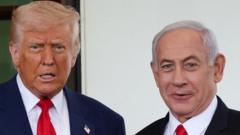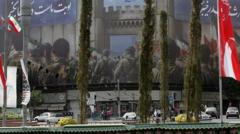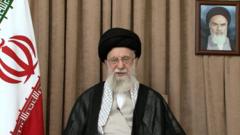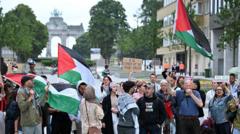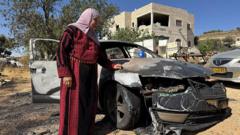In the heart of Tehran, vibrant cafes and bustling bazaars are beginning to return life to the city, yet the shadow of conflict still lingers in the minds of its people.
**Tehran's Evolving Spirit: A City of Resilience Amidst Turmoil**
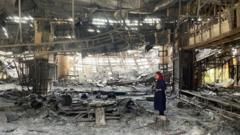
**Tehran's Evolving Spirit: A City of Resilience Amidst Turmoil**
Despite the recent turmoil, residents of Tehran are slowly reclaiming their city, grappling with uncertainty and renewed hopes for the future.
In a once-bustling corner of Tehran now stands the Boof cafe, a site within the long-closed US embassy, echoing the city’s layers of history and politics. Amir, the barista, serves strikingly cold iced Americano coffees, while expressing a wish for improved relations between Iran and the United States. His sentiment is shared by many who feel the weight of US sanctions impacting their livelihoods.
The atmosphere inside the cafe is a microcosm of Tehran itself, reflecting a blend of traditional norms and modern aspirations. One woman venerates modest dress in a long black veil, while another challenges the clothing standards, draped casually in jeans and sharing an intimate moment with her boyfriend. This juxtaposition illustrates Tehran's ongoing struggle between cultural conservatism and the yearning for personal freedoms.
Ayatollah Ali Khamenei’s recent remarks clarify the regime's stance, emphasizing a long-held opposition to America and framing current conflicts as existential threats. The tension escalated recently following a wave of Israeli strikes targeting Iranian military and nuclear sites, imperiling not just military personnel but civilians as well, as evidenced by the accounts from Ashraf Barghi, a head nurse who struggles with the trauma inflicted on patients, including those injured in insecurity fluctuations across the city.
As hospitals continue to serve those affected by violence, the government reported over 600 fatalities alongside thousands injured. Despite this, Tehran's rhythms are resurfacing. Traffic congests the streets again, markets resonate with the sounds of commerce, and citizens attempt to push back against the bleak emotional aftermath of recent events.
Mina, a visibly shaken young woman, recalls heartbreak and despair upon reflecting on the war's impact. “We tried so hard to have a better life but we can't see any future these days,” she admits, highlighting the collective grief felt through the metropolis.
This urban recovery finds an echo during cultural gatherings, such as an open-air concert with the Tehran Symphony Orchestra, where people from various backgrounds unite in a communal space, momentarily forgetting their apprehensions. They yearn to have their voices heard by their leaders, hoping for a pivot towards greater freedoms amidst tough national dialogues.
The return to daily life in Tehran, however tentative, masks an undercurrent of fear and a longing for peace, freedom, and a hopeful future. Iranians are talking, sharing their views in a society that is grappling with the duality of its past trauma and resilient aspirations.
As Tehran’s narrative continues to unfold, it remains visible that the impact of global politics, sanctions, and conflicts continues to shape the lives of its citizens, who strive for a brighter tomorrow amidst ongoing challenges.
The atmosphere inside the cafe is a microcosm of Tehran itself, reflecting a blend of traditional norms and modern aspirations. One woman venerates modest dress in a long black veil, while another challenges the clothing standards, draped casually in jeans and sharing an intimate moment with her boyfriend. This juxtaposition illustrates Tehran's ongoing struggle between cultural conservatism and the yearning for personal freedoms.
Ayatollah Ali Khamenei’s recent remarks clarify the regime's stance, emphasizing a long-held opposition to America and framing current conflicts as existential threats. The tension escalated recently following a wave of Israeli strikes targeting Iranian military and nuclear sites, imperiling not just military personnel but civilians as well, as evidenced by the accounts from Ashraf Barghi, a head nurse who struggles with the trauma inflicted on patients, including those injured in insecurity fluctuations across the city.
As hospitals continue to serve those affected by violence, the government reported over 600 fatalities alongside thousands injured. Despite this, Tehran's rhythms are resurfacing. Traffic congests the streets again, markets resonate with the sounds of commerce, and citizens attempt to push back against the bleak emotional aftermath of recent events.
Mina, a visibly shaken young woman, recalls heartbreak and despair upon reflecting on the war's impact. “We tried so hard to have a better life but we can't see any future these days,” she admits, highlighting the collective grief felt through the metropolis.
This urban recovery finds an echo during cultural gatherings, such as an open-air concert with the Tehran Symphony Orchestra, where people from various backgrounds unite in a communal space, momentarily forgetting their apprehensions. They yearn to have their voices heard by their leaders, hoping for a pivot towards greater freedoms amidst tough national dialogues.
The return to daily life in Tehran, however tentative, masks an undercurrent of fear and a longing for peace, freedom, and a hopeful future. Iranians are talking, sharing their views in a society that is grappling with the duality of its past trauma and resilient aspirations.
As Tehran’s narrative continues to unfold, it remains visible that the impact of global politics, sanctions, and conflicts continues to shape the lives of its citizens, who strive for a brighter tomorrow amidst ongoing challenges.

